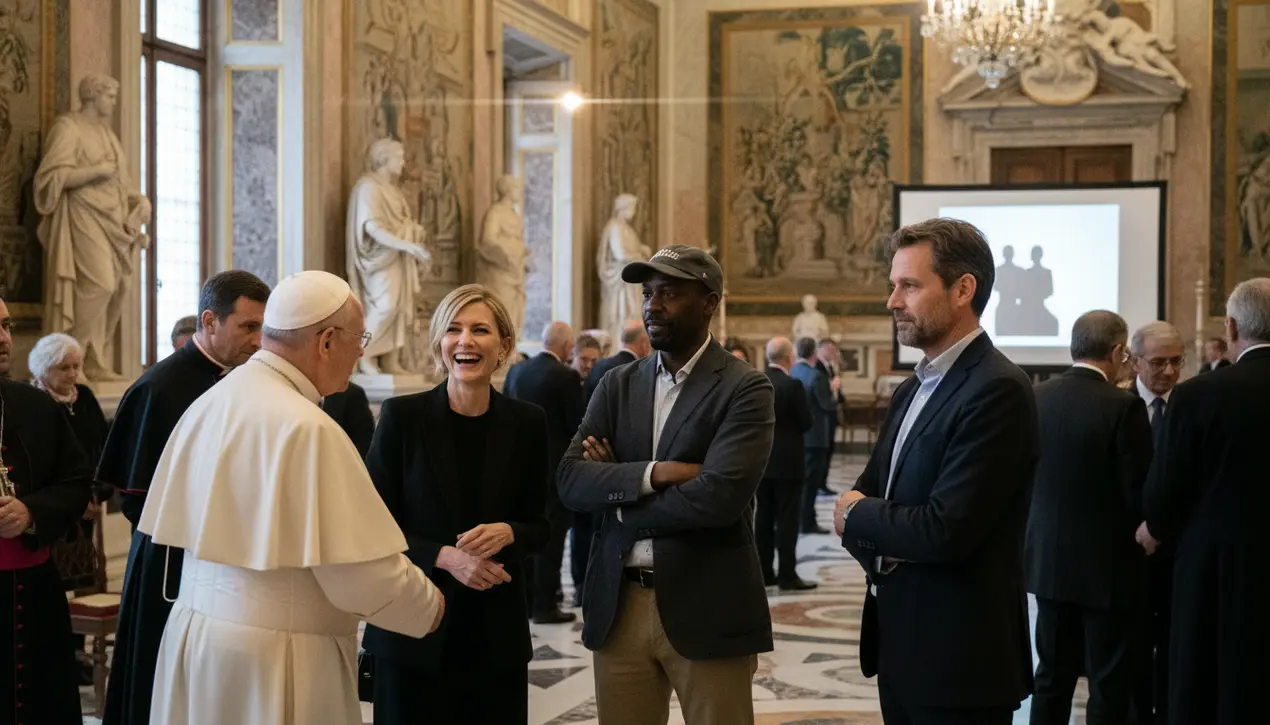
Entertainmentcelebrities
Pope Leo meets Hollywood stars at Vatican cinema event.
AM
Amanda Lewis
2 hours ago7 min read1 comments
The hallowed halls of the Vatican, more accustomed to the rustle of clerical vestments than the flash of paparazzi cameras, played host to a singular convergence of worlds this week as Pope Leo convened a special event for global cinema, drawing a constellation of stars including the chameleonic Cate Blanchett, the fiercely independent auteur Spike Lee, and the thoughtfully reserved Viggo Mortensen. This was not merely a photo opportunity; it was a profound dialogue, a meeting of modern-day mythmakers with an ancient institution that understands, perhaps better than any other, the power of narrative to shape human consciousness.One can imagine the scene: the Baroque splendor of the Sala Regia serving as a backdrop to discussions that traversed the entire spectrum of the cinematic arts, from the gritty social realism Lee champions to the ethereal, otherworldly characters Blanchett so masterfully embodies, and the quiet, methodical intensity Mortensen brings to each role. The very premise invites a critic to delve into the symbolism—the Church, for centuries the primary purveyor of grand narratives through fresco, sculpture, and liturgy, now engaging with the new priesthood of storytellers: the directors and actors who command the global pulpit of the silver screen.What does the Vatican seek in this rapprochement? It is a tacit acknowledgment that in our fragmented digital age, the cinema remains one of the last truly collective experiences, a secular cathedral where audiences gather to witness stories of sin and redemption, justice and mercy, love and loss—themes that have always been the Church's domain. This event echoes a long, if sometimes fraught, history between the Holy See and Hollywood, from the draconian days of the Hays Code, which sought to morally police American cinema, to the more nuanced engagements of recent papacies.Pope Leo’s initiative, however, feels less like an imposition of doctrine and more like an open-handed inquiry, a desire to understand the artists who are crafting the modern moral imagination. One can speculate on the conversations that unfolded: perhaps Blanchett, who has portrayed everything from a fallen socialite to an elven queen, spoke of the actor’s quest for truth in artifice; maybe Lee, whose work is a sustained critique of American racial politics, discussed the filmmaker's responsibility as a provocateur and truth-teller; and likely Mortensen, a poet and artist off-screen, reflected on the quiet spaces where character and conscience meet.The consequences of such a dialogue are potentially vast, suggesting a future where the Catholic Church might more deftly engage with contemporary culture, not as a censor but as a conversational partner, recognizing that the light of a projector can illuminate the human condition as powerfully as the light through a stained-glass window. This event was not an end but a compelling opening scene, setting the stage for a more intricate and collaborative relationship between faith and the seventh art.
#Pope Leo
#Vatican
#Cate Blanchett
#Spike Lee
#Viggo Mortensen
#global cinema
#featured
Stay Informed. Act Smarter.
Get weekly highlights, major headlines, and expert insights — then put your knowledge to work in our live prediction markets.
Related News
Comments
Loading comments...
© 2025 Outpoll Service LTD. All rights reserved.